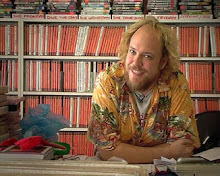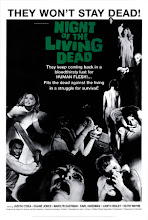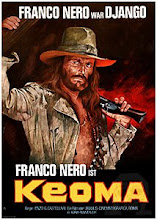
Director/Writer W.W. Young
Cast Viola
The Sealed Room
Director D.W. Griffith Writer Frank E. Woods
Cast Arthur V. Johnson (The Count), Marion Leonard (The Countess), Henry B. Walthall (The Minstrel), Mary Pickford (Lady-In-Waiting)
The Student Of
aka Der Student von Prag
Directors Stellan Rye, Paul Wegener Writer Hanns Heinz Ewers
Cast Paul Wegener (Balduin), John Gottowt (Scapinelli), Grete Berger (Komtesse Margit), Lyda Salmonova (Lyduschka)
Tonight we screen three very early and, in their own ways, pioneering examples of fantasy and horror filmmaking from the first half of the Silent Era – the 1915 Alice In Wonderland, The Sealed Room from 1909, and the 1913 The Student Of Prague.
 Though certainly not the first filmed version, from 1915 comes the first faithful adaptation of Alice In Wonderland, a brave attempt to recreate Lewis Carroll's tale using elaborate costumes and production values. Young Viola Savoy, who at 15 was already a veteran of over a hundred stage productions, plays Alice in a role which over the next decade would identify her in the public's eye. Forty minutes survive of its original hour long running time – which means two reels have slipped into the ether, one sadly containing the Mad Hatter's Tea Party, giving Alice's narrative a more surreal, dislocated quality. What has remained intact is quite remarkable. Alice's journey through the Looking Glass has a strange dreamlike feel throughout – the Cheshire Cat appears and reappears in a startling series of in-camera jump cuts, and the Lobster Dance has to be seen to be believed!
Though certainly not the first filmed version, from 1915 comes the first faithful adaptation of Alice In Wonderland, a brave attempt to recreate Lewis Carroll's tale using elaborate costumes and production values. Young Viola Savoy, who at 15 was already a veteran of over a hundred stage productions, plays Alice in a role which over the next decade would identify her in the public's eye. Forty minutes survive of its original hour long running time – which means two reels have slipped into the ether, one sadly containing the Mad Hatter's Tea Party, giving Alice's narrative a more surreal, dislocated quality. What has remained intact is quite remarkable. Alice's journey through the Looking Glass has a strange dreamlike feel throughout – the Cheshire Cat appears and reappears in a startling series of in-camera jump cuts, and the Lobster Dance has to be seen to be believed!
 D.W. Griffith is considered one of the seminal filmmakers of the Silent Era. Before his groundbreaking features such as Birth Of A Nation and Intolerance, he made a series of short films he labeled Biographs, essentially brief filmed experiments in film language and craftsmanship. The Sealed Room from 1909 is a ten-minute horror melodrama “suggested” by Edgar Allan Poe's The Cask Of Amontillado, and features a ghastly tale of revenge upon a king's faithless concubine and her strumming minstrel lover. The most primitive of the three films tonight, it nonetheless shows a cinematic alchemist tinkering with a gothic horror formula with interesting results.
D.W. Griffith is considered one of the seminal filmmakers of the Silent Era. Before his groundbreaking features such as Birth Of A Nation and Intolerance, he made a series of short films he labeled Biographs, essentially brief filmed experiments in film language and craftsmanship. The Sealed Room from 1909 is a ten-minute horror melodrama “suggested” by Edgar Allan Poe's The Cask Of Amontillado, and features a ghastly tale of revenge upon a king's faithless concubine and her strumming minstrel lover. The most primitive of the three films tonight, it nonetheless shows a cinematic alchemist tinkering with a gothic horror formula with interesting results.
 And so to the last film - from 1913 comes The Student Of Prague, a German production from before the classic Expressionist period of The Cabinet Of Dr Caligari and the like, and considered lost until ten years ago. It's a Faustian tale of a poor and listless university student Balduin who is in love with a Countess. Penniless and with few prospects, he makes a deal with a sorceror for an endless bag of gold. The sorceror, an impish fellow who may be Beelzebub himself, chooses the student's mirror reflection, thus sealing Balduin's tragic fate. The split-screen effects are remakable, as is the backdrop of old
And so to the last film - from 1913 comes The Student Of Prague, a German production from before the classic Expressionist period of The Cabinet Of Dr Caligari and the like, and considered lost until ten years ago. It's a Faustian tale of a poor and listless university student Balduin who is in love with a Countess. Penniless and with few prospects, he makes a deal with a sorceror for an endless bag of gold. The sorceror, an impish fellow who may be Beelzebub himself, chooses the student's mirror reflection, thus sealing Balduin's tragic fate. The split-screen effects are remakable, as is the backdrop of old





















































































No comments:
Post a Comment